I've never fancied myself a connoisseur of wine. I always LOVED wine. But, loving and UNDERSTANDING wine are two completely different animals. Having had a long relationship with wine, I thought that I knew at least a little bit about it. However, since enrolling in culinary school I find that I have barely nudged the tip of the wine iceberg. I am currently the apprentice to a true wine afficianado...a Court Master Certified Sommelier with a vast knowledge and the willingness to teach me!
All wine drinkers have a little knowledge about wine. They know what they like and dislike. Most people think a wine tasting just means to sip it and decide whether or not they care for the flavor. It goes much deeper than that!
There are different philosophies regarding tasting wines. Most people, even non-wine drinkers, think that when tasting wine all they must do is swirl the glass, sniff the wine and then take a taste. The Court of Master Sommeliers has it's own way of evaluating different wines and it boils down to deductive reasoning. The ability to assess a wine in a blind taste test is a learned procedure. It takes years for a person to become adept enough at it to actually be considered an expert. It all goes back to sensory memory.
When tasting wines even your environment plays a role, it must be conducive to tasting. You need bright halogen or white light (not incandescent), low noise levels (soft music is acceptable) and NO scents whatsoever (no cooking smells, no perfumes and no candles burning). You will need a white tablecloth or white paper to use as a background for your visual deductions, and a notepad or tasting sheet. The glasses should be clean, free of etchings and scratches (no Waterford here folks!) and be of a basic Bordeaux shape.
The four main criteria in a deductive tasting procedure are sight, nose, palatte, and conclusions. Sight is where you will gain information about a wine's age and condition. The clarity will tell you if the wine is filtered or unfiltered. The brightness or capacity for the wine to reflect light will indicate it's level of acidity (brighter is more acidic). The color and/or hue is the clue to the wine's age, storage conditions and variety. Whites and blushes grow darker with age while reds will grow more transluscent with age as pigments and tannins in reds precipitate out as sediment. The color variance is the difference between the center of the wine and the edge. For example, a garnet center with an orange edge may indicate some age to the wine. A thicker, watery edge usually indicates a higher alcohol content. Lastly, you must visually determine the wine's "legs". The "legs" are how the wine runs down the side of the glass after swirling and is an indication of viscosity. Thicker and slow moving legs indicates higher sugar content which translates to higher alcohol. Thinner legs indicates low alcohol and higher acidity.
The next step in properly tasting a wine is it's nose. Smell accounts for 85% of taste. If you find this surprising then do a little experiment. Try eating or tasting something while you hold your nose closed. You can barely TASTE it! The best technique for smelling wine should be several short sniffs versus one long hoover. Each sniff allows your cilia to pick up different characteristics in the wine. Also, you must swirl the wine in the glass to expose it to oxygen. By allowing the wine to breathe you will activate the aromatic elements. The most interesting thing to me about the differing aromas found in wine is the fact that they will mimic other smells and this can give you a direction to go when trying to figure out what wine you are drinking. For example, an earthiness would be more aligned with an Old World wine (ie. French, German, Spanish or Italian). A fruitier or floral scent without any minerality would be indicative of a New World wine. The amount of oak you smell and what that oak imparts can be a clue as to the wines origin as well. I could wax poetic for days about the many different nuances found in the scent of wine. The chart at the left is all of the smells associated with wine. You can see that there are over 80 different smells! Each giving you a clue as to the source of the wine. The following link gives you an idea of the many different scents found in wine. I plan to purchase this kit to further my wine expertise! http://www.makescentsofwine.com/aromas.htm
After sniffing the wine you must confirm what you have smelled. Wine should taste like it smells if it is produced properly. Focus on how the wine changes as it travels over your palatte. Is it sweet or dry? How does it "sit" in your mouth? Is it light and dancing over your tongue? If so, it indicates lower alcohol content. If it has more body then it probably has more alcohol. Are the tannins making you want to lick your teeth and pucker up? Grape tannins would cause this. Wood tannins are experienced on the back of your tongue and feel like having a piece of velvet rubbed over your tongue. Try not to confuse tannins with acidity. If the taste of the wine activates your salivary glands it is more acidic. How does the wine finish? A long finish, taste remaining for a long time, indicates a higher quality of wine. Length of finish is directly related to the quality of production of the wine. Also, you can identify Old World wines by their acidity level, earthiness and a balanced level of wood as opposed to New World in your face woodiness. An overall balanced flavor is suggestive of an Old World wine having less punch than it's New World counterpart. The acidity and alcohol level are a very good indicator of the climate where the grapes were grown. As grapes ripen in the heat, the grape acids will convert to sugars. Grapes ripen more slowly in a cooler climate and grapes can be harvested before all the acid has converted to sugar. These grapes will produce a wine lower in alcohol because of the low sugar content of the grape and will have more acid (a good example is a German Riesling). A hot climate tends to produce a sweeter grape and, therefore, more alcohol content. You would end up with a full bodied wine such as a Zinfandel or a Syrah.
The final step in identifying a wine in a blind taste test is to be familiar with your benchmarks. This can only be achieved through repetitive tasting. With experience you will eventually know that Syrahs impart black currant, smoke, granite, pepper and chocolate. Cabernet Francs would have a distinctive green bell pepper smell. Sauvignon Blancs from the Loire Valley in France would smell of hay or a green grassy smell (cut grass). The scent of grapefruit and asparagus would be designative of a Sauvignon Blanc from New Zealand's Marlborough region. Think of all the areas of the world where wine is produced (it's a lengthy list!) and compare the climate of the area with external forces (such as laws negating irrigation in France, Italy, Spain and Germany). All of these conditions will lead you to your final conclusions.
My advice to anyone hoping to become a true wine connoissuer is to go to as many wine tastings as you can. Ask questions! Don't be shy about it. With experience comes ability. I must say that my ongoing romance with wine will continue to flourish and I hope to one day become the expert that I THOUGHT I was! My new found knowledge only makes me fall more in love with everything about wine. I must say cheers to my Chef Instructor and until next time....bottoms up!
Signing Off...officially
14 years ago

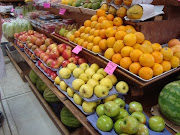
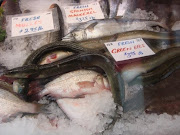
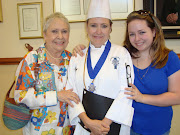
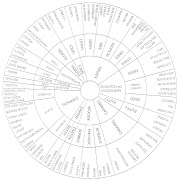
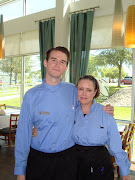





No comments:
Post a Comment